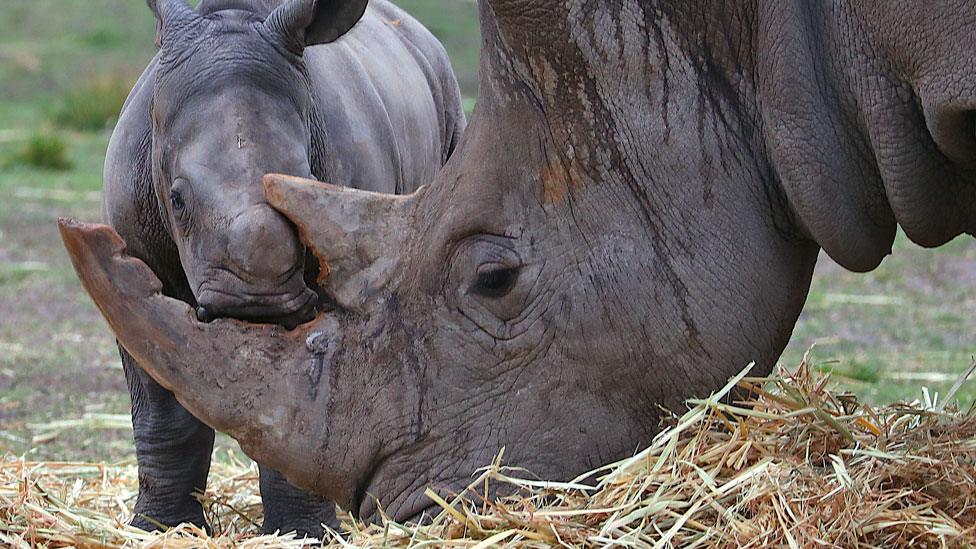Fake rhino horn invented to ruin poachers' market
- Published

Scientists have developed a technique for making fake rhino horn, which they hope will undermine the illegal market in the genuine article.
Researchers at the University of Oxford and Fudan University in China have found a way of making fake rhino horn cheaply from horse hair.
Demand for rhino horn has been blamed for driving poaching and threatening the survival of the species.
The Oxford team said the fakes would "confuse the trade".
But there has been some scepticism about whether this will be effective - with Save the Rhino International warning it could inadvertently stimulate the market for rhino horn.
The conservation charity says it is more important to focus on anti-poaching measures and attempts to reduce consumer demand.
Financial attack
Rhino horn has been claimed as an aphrodisiac in traditional Chinese medicine - which has sustained demand despite official attempts to prevent the trade.
This joint UK and Chinese project is the latest attempt to find a way of making artificial horn that is realistic enough to be convincing, with the aim of flooding the market with fakes and undermining the financial incentives for poachers and smugglers.
There have been previous ideas for fake horn, but this project wants a credible version that can be cheaply mass-produced.
Creating fake horn is intended to reduce the financial incentive for rhino poachers
The scientists say the "horn" of a rhino is not like the horn of a cow, but is formed from tufts of tightly packed hair that are glued together by secretions from the animal.
And the team of zoologists in Oxford and molecular scientists in Fudan University in Shanghai have developed a way of compressing and moulding horse hair in a way that looks and feels similar even when the "horn" is cut.
If credible fakes could be produced cheaply, the scientists say it would cut prices and reduce the incentive for killing the rhinos.
"It appears from our investigation that it is rather easy as well as cheap to make a bio-inspired horn-like material that mimics the rhino's extravagantly expensive tuft of nose hair," said Prof Fritz Vollrath, from the University of Oxford's Department of Zoology.
He said he hoped the technique could be used to "confuse the trade, depress prices and thus support rhino conservation".
Unintended consequence?
But John Taylor, deputy director of Save the Rhino International, is unconvinced how much fake horn would reduce the threat to rhinos.
He says there is a risk that attempts to "flood the market" would have the unintended consequence of expanding the market and creating even more demand, which could cause even more poaching for real rhino horn.
He also questions how in practice fake horn could be inserted into an illegal black market trade.
Mr Taylor is not certain that artificial horn would really convince two of the main markets - where it is ground up for traditional Chinese medicine and where wild rhino horn is used as a status symbol, particularly in Vietnam.
"There is no substitute for anti-poaching measures at one end and reducing demand at the other," he says.
- Published15 February 2019
- Published25 June 2019
- Published18 September 2017